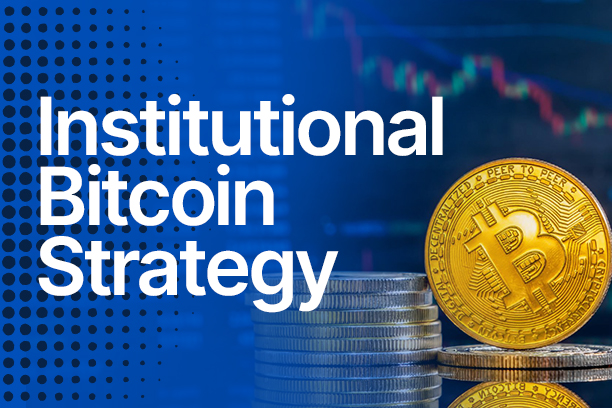Bitcoin was once dismissed as a passing trend, a risky experiment embraced only by tech enthusiasts and retail traders. But today, it has earned a permanent place in the financial world.
Most institutional investors are no longer just observing from the sidelines but actively structuring portfolios around Bitcoin. However, how smart money approaches crypto vastly differs from the strategies retail traders use.
Unlike the average retail investor who jumps in based on price swings or social media hype, institutions operate with long-term vision, risk management, and strategic execution. They are not in the business of making quick profits on volatile trades.
Instead, they focus on sustainable, measured accumulation, utilizing financial instruments like exchange-traded funds (ETFs), futures, and over-the-counter (OTC) transactions to optimize exposure while minimizing risk.
“Retail traders think in days or weeks, but institutions think in years. They don’t chase trends—they create them,” says Matthias.
The entry of major firms like BlackRock, Fidelity, and Millennium Management into the Bitcoin space signals a shift. This is no longer just a digital asset on the fringes of finance; it is a recognized store of value with actual institutional demand.
Understanding how these financial giants approach Bitcoin can help retail traders think more brilliant, act strategically, and navigate the market with more discipline.

Institutions Accumulating Bitcoin
One of the biggest misconceptions is that institutions buy Bitcoin in the same way retail traders do—by placing large orders on exchanges. In reality, they use far more sophisticated methods to accumulate Bitcoin without disrupting the market. The primary channels they use include:
First, ETFs and fund structures have become the most attractive gateway for institutions. With the launch of Bitcoin ETFs, institutional investors can gain exposure to Bitcoin without directly holding the asset.
This allows them to integrate it into portfolios without worrying about security risks, self-custody, or regulatory concerns. When an institution buys shares in a Bitcoin ETF, market makers handle the transactions behind the scenes, ensuring liquidity and price stability.
Second, OTC (Over-the-Counter) trading desks are crucial in institutional accumulation. Rather than buying on public exchanges where large orders can cause price fluctuations, institutions work with private trading desks to execute bulk purchases discreetly. These transactions occur off the open market, ensuring minimal impact on price movements.
Third, derivatives markets are heavily used by institutions to hedge risk and gain indirect exposure to Bitcoin. Futures and options allow them to bet on Bitcoin’s price movements without actually holding the asset. This is particularly useful for institutions managing risk in uncertain market conditions.
Unlike retail investors, who often react emotionally to price swings, institutions focus on positioning themselves for long-term gains without drawing attention to their moves. Their slow, methodical approach ensures they don’t inflate Bitcoin prices artificially while still building large positions over time.
“Institutions don’t FOMO into Bitcoin. They accumulate when the market is quiet, and when the hype starts, they are already positioned,” Matthias explains.
The Core of Institutional Bitcoin Strategy
Institutions view risk differently than retail traders. While a retail investor might focus on short-term price action, institutions evaluate Bitcoin in the context of portfolio allocation, liquidity management, and regulatory impact.
Institutions favor Bitcoin over altcoins because of its established market history and security. Bitcoin has survived multiple market cycles, regulatory scrutiny, and technological stress tests. It is seen as the most resilient digital asset, making it the most straightforward entry point for institutions looking to allocate capital into crypto.
Additionally, institutions follow a structured investment approach. Many firms use the 1-2% allocation model, where Bitcoin represents a small but impactful portion of their total portfolio. This ensures that even in a volatile crypto market, the risk remains controlled while still allowing for significant upside potential.
Another key risk factor is regulatory uncertainty. Unlike Bitcoin, which has achieved some level of legal recognition in many countries, most altcoins exist in a gray area. Institutions avoid assets that could face sudden regulatory crackdowns, which is why Bitcoin remains their primary choice.
This conservative, calculated approach stands in stark contrast to retail trading, where investors often take large, concentrated bets based on speculative narratives. Institutional investors, on the other hand, prefer gradual exposure, strict compliance, and risk-adjusted returns.

Institutions Move Bitcoin Without You Noticing
One of the most misunderstood aspects of institutional investing is how they influence the market. Retail traders often believe that when institutions invest in Bitcoin, they do so in a way that causes immediate price spikes. However, institutional money does not operate like retail trading—it moves the market quietly over time.
For example, Bitcoin ETF inflows have increased dramatically, but the effect on Bitcoin’s price has been gradual rather than sudden. This is because institutions trade with efficiency, not emotion. Their goal is to acquire assets without creating excessive volatility.
Moreover, institutions shape the market beyond direct buying and selling. With their influence, they push for regulatory clarity, infrastructure improvements, and financial products that make Bitcoin more accessible. Their presence alone legitimizes Bitcoin as an investable asset.
The deeper institutions embed themselves into Bitcoin’s ecosystem, the more Bitcoin transitions from a speculative asset into a recognized financial instrument.
Future of Institutional Bitcoin Investment
The market will likely evolve in several ways as institutions continue integrating Bitcoin into their portfolios. First, expanding Bitcoin ETFs and other investment products will attract even more institutional players, leading to higher liquidity and stability. Second, approving additional crypto-related funds and structured products could pave the way for Bitcoin to be included in pension funds, sovereign wealth funds, and large-scale asset management portfolios.
Third, the growing regulatory acceptance of Bitcoin will allow more institutions to participate without legal concerns. Countries that establish clear frameworks will become key hubs for institutional Bitcoin adoption.
However, while institutional investment will drive maturity and stability, it will also change the market dynamics. Retail investors will no longer be the primary force behind price movements, and Bitcoin’s days of extreme volatility may gradually decline.
Learning from the Institutional Playbook
Understanding how institutions approach Bitcoin can provide valuable lessons for retail investors. Instead of chasing hype and reacting to short-term trends, individuals can adopt the institutional mindset—focusing on long-term accumulation, risk management, and disciplined decision-making.
The arrival of institutional investors is reshaping the Bitcoin market, making it more structured, resilient, and deeply integrated into the global financial system. While retail traders may still play a role in price movements, it’s clear that the future of Bitcoin is being built by institutions with long-term conviction.
For anyone looking to navigate the world of Bitcoin with a smarter, more strategic approach, the institutional playbook provides a roadmap: think long-term, manage risk, and position yourself early—just like the pros do.





